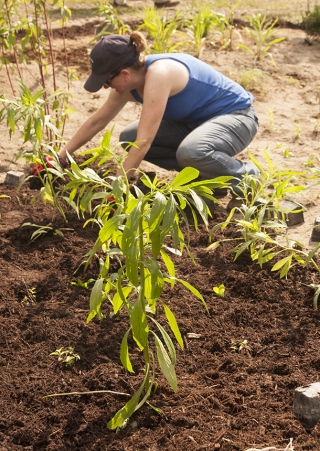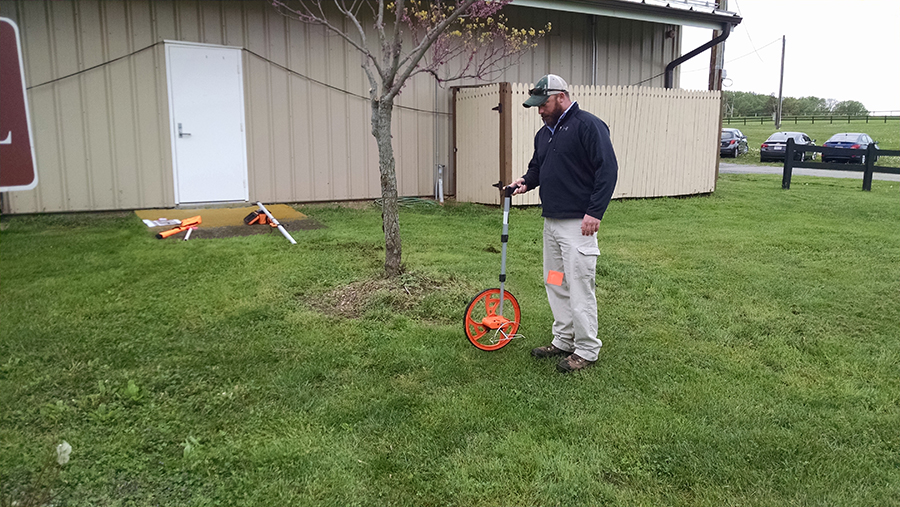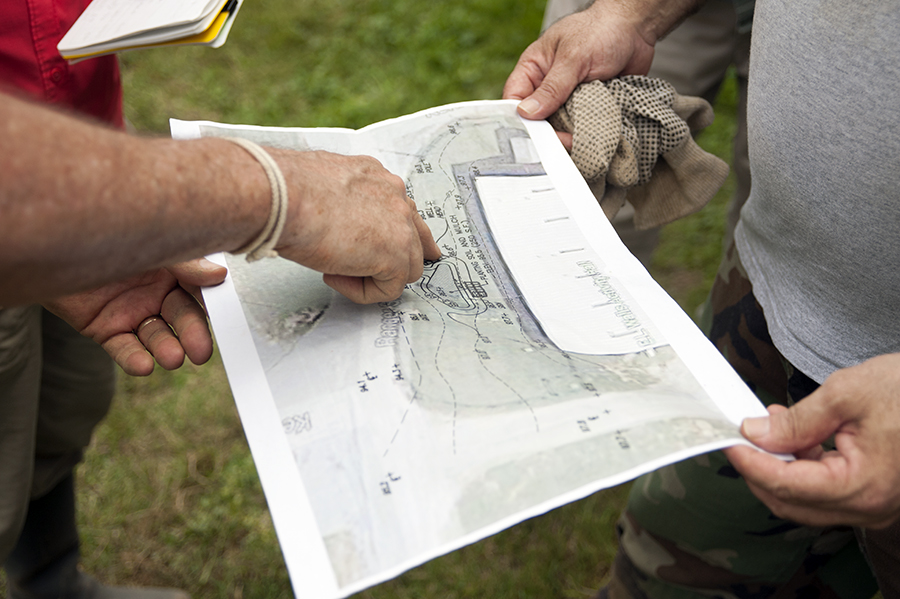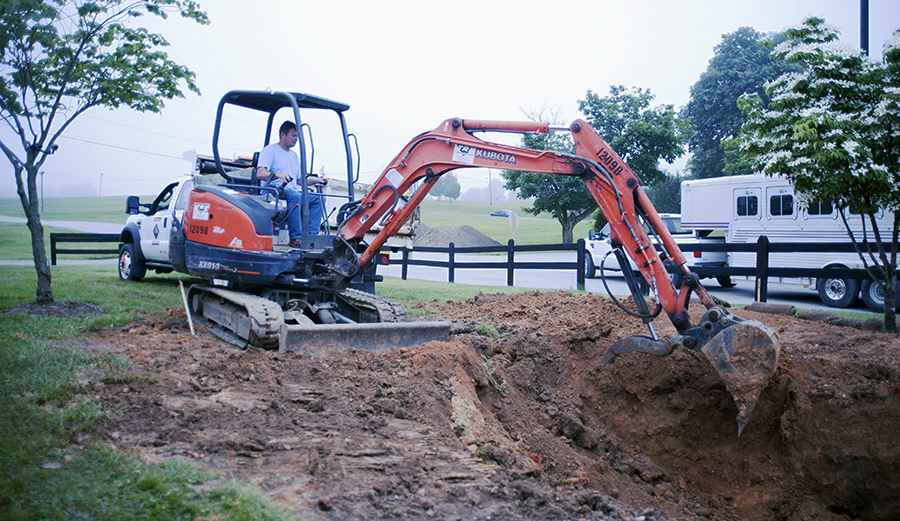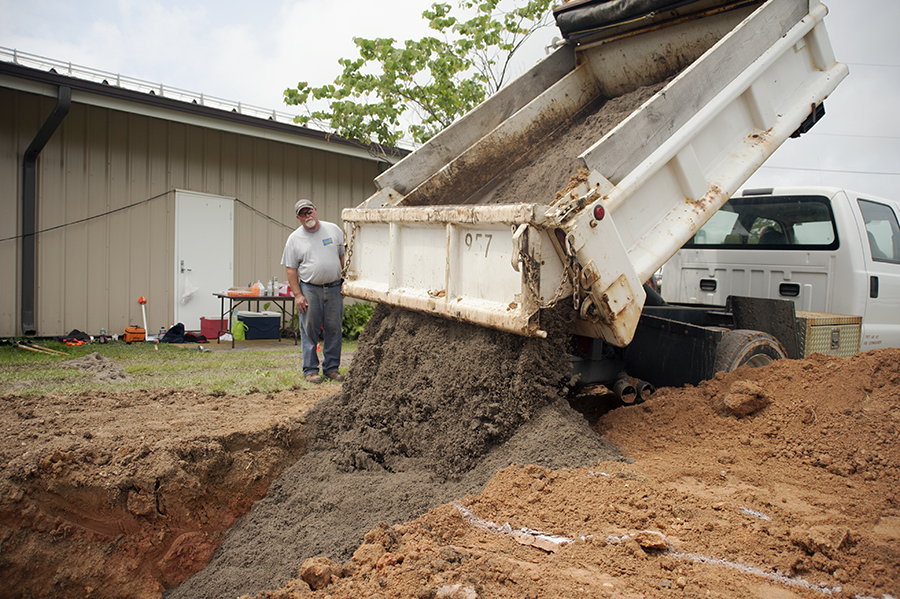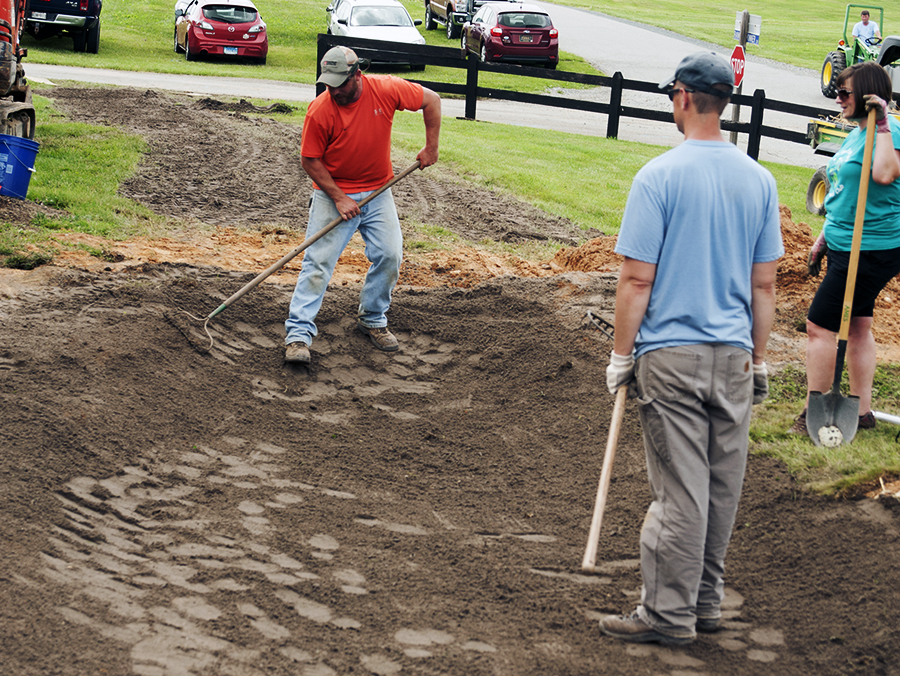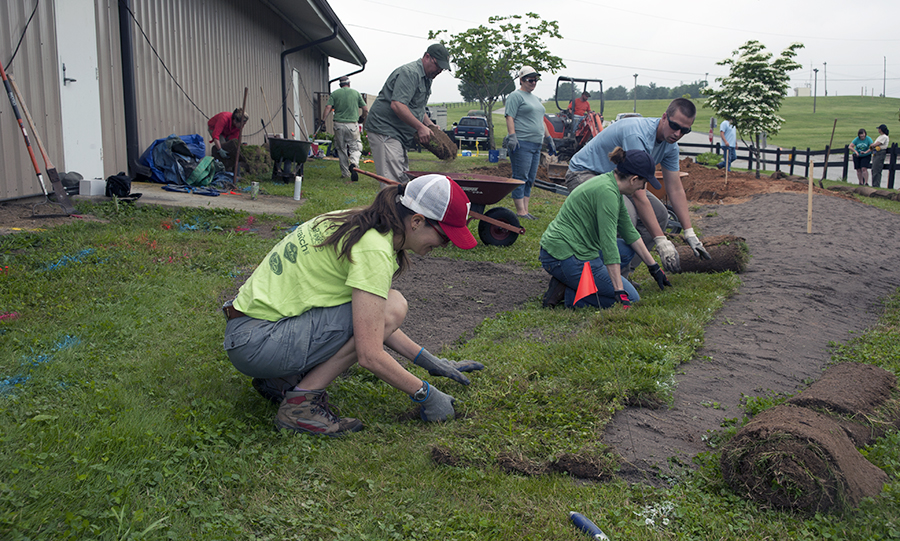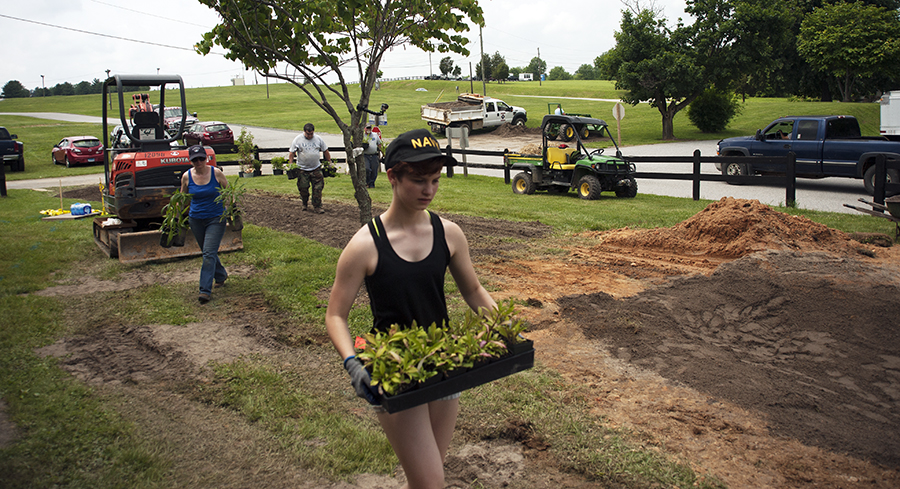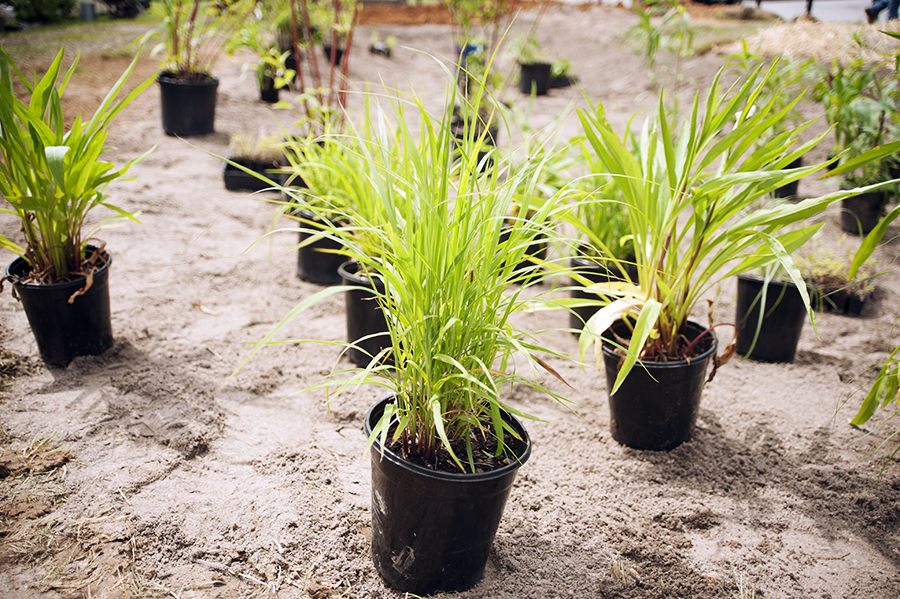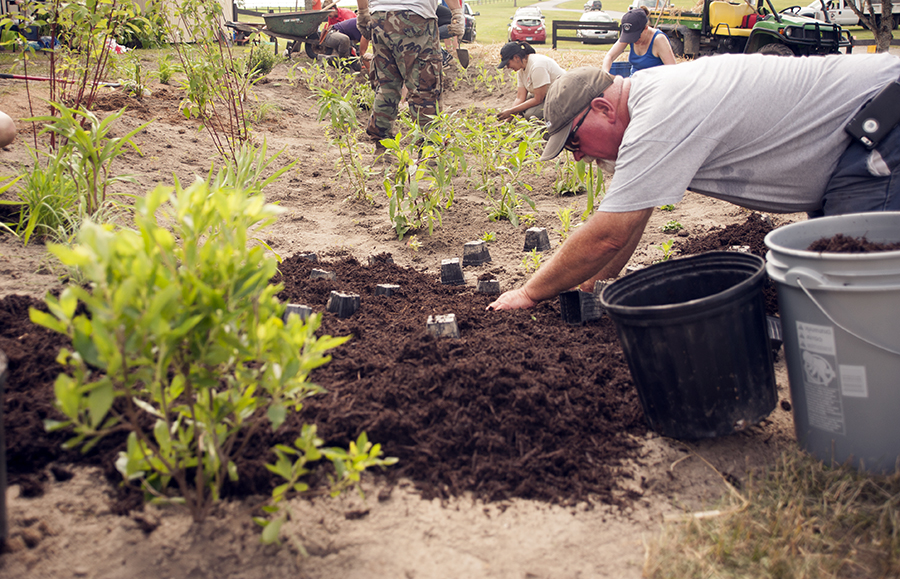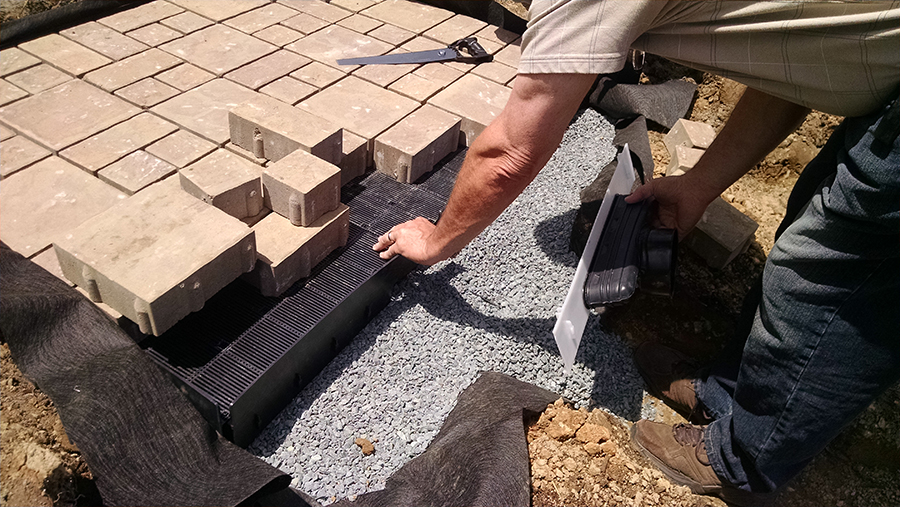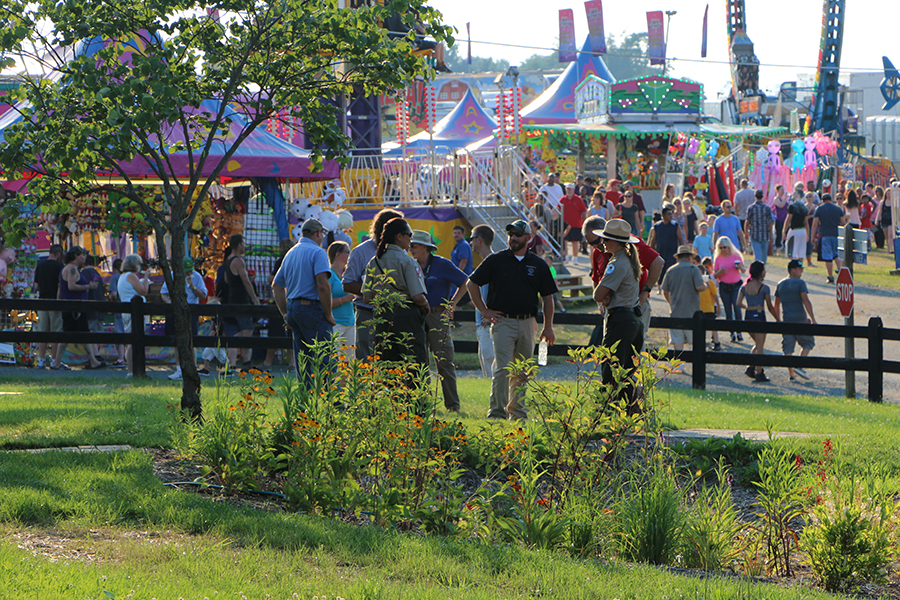Knauss legislative fellowships in Congress help build careers — and they're fun and educational. See our video and fact sheet for details.
Photo Essay: A Long, Sweaty Day of Learning Stormwater Management
This is the final of three posts about a group of Maryland residents who were admitted to the 2015-2016 Cecil County Watershed Stewards Academy. Read the previous posts about why people join the academy and what the academy trainees learned during a field trip to evaluate sites for a group project.
On a hot summer day north of Elkton, Maryland, seven trainees in the Cecil County Watershed Stewards Academy reached an important milestone. They were going to install their first stormwater management project or “practice” to improve local water quality and help protect the Chesapeake Bay.
Earlier, the trainees had chosen a site for their group project: a grassy area next to a large public building at the Fair Hill Natural Resource Management Area. There, they would install a 230-square-foot rain garden to soak up and clean polluted stormwater draining off the building’s metal roof.
The trainees had spent nine months in the Cecil academy being prepared to lead efforts in their communities to better manage stormwater runoff. Rain gardens are just one type of stormwater practice that the academy participants were learning how to plan, fund, and install.
Installing the rain garden at Fair Hill fully involved 16 people, including volunteers from the local community, the Maryland Department of Natural Resources Park Service, and the Cecil County Department of Public Works (DPW). In this photo essay, you can see how they did it.
Before the Watershed Stewards Academy participants broke ground, Marshall McSorley — the Cecil County Department of Public Works (DPW) stormwater inspector who helps run the academy — measured out the rain garden’s footprint. At about 230 square feet, the garden would be large enough to handle a substantial amount of the rainwater draining from nearby downspouts during a typical storm. Stormwater contains sediment as well as the nutrient pollutants nitrogen and phosphorus. Processes in the soil reduce the amount of nutrients carried in the water. Photo: Eric Buehl
On the morning of the rain garden construction project, steward trainees and their partners in the Cecil DPW reviewed a computer-designed plan created by John Gonzalez, an Elkton civil engineer and participant in the Watershed Stewards Academy. The plan detailed the shape and size of the garden, the contouring of the turf area needed to redirect runoff into the garden, and the types and locations of the plants. Photo: Daniel Pendick
Guided by rough boundary lines spray-painted onto the turf, Cecil DPW employee Mike Evans excavated the garden’s foundation. The soil near the surface contained clay, which would slow the infiltration of runoff water into the ground. Luckily, test borings had revealed a sandy layer 42 inches below the surface. This would allow water to soak into the ground instead of flowing untreated into a nearby stream. Photo: Daniel Pendick
The hole was filled with biosoil — a special mix of sand and organic matter. Biosoil binds pollutants, provides a medium for the garden’s plants to take root, and allows excess stormwater to percolate down into the sandy layer beneath the garden. Photo: Daniel Pendick
The top of the biosoil was carefully contoured to form a shallow depression with gently sloping sides. This helps stormwater to flow into the garden slowly and evenly. Photo: Daniel Pendick
During a storm, water flows in a sheet over the turf once it becomes saturated. So the stewards incorporated a berm into their design to steer the runoff into the rain garden. Maryland Sea Grant Extension Watershed Restoration Specialist Jennifer Dindinger (foreground), helped lay sod on the berm, alongside steward trainees Janine Antoshak and Brian Richardson (to Dindinger’s left). Photo: Daniel Pendick
Once the garden’s surface was ready, local volunteers — like Sydney Keys, in the foreground — helped the steward trainees to carry racks of plants to the rain garden for installation. The team bought the plants from nurseries in the area that specialized in growing native plants. Photo: Daniel Pendick
The watershed stewards chose a dozen different varieties of plants for the rain garden. The plants were placed at locations that would provide the best conditions for them to thrive. Wet-tolerant plants, for example, were put nearer the center of the garden, where water tends to pool after storms. Photo: Daniel Pendick
Brian Richardson (front, left) and Jordane Wiseman (front, right) and the other trainees and volunteers worked quickly to get the plants in the ground under a scorching sun. Photo: Daniel Pendick
The team covered the exposed topsoil between the plants with mulch to stabilize the soil, prevent erosion, retain moisture, and make the garden more attractive. Photo: Daniel Pendick
After the team put the plants into the garden, Cecil DPW workers returned another day to install three observation decks using permeable paving stones. The pavers were placed on top of a special foundation of plastic meshwork to provide temporary storage and allow stormwater to infiltrate into the soil. Photo: Eric Buehl
After installation, the garden’s capabilities were put to the test after a heavy rainstorm. Standing water takes about 12 to 24 hours to drain into the soil below. Photo: Eric Buehl
At the Cecil County Fair — held every summer at the Fair Hill Natural Resource Management Area — scores of county residents got to see the new rain garden. Rain gardens in high-traffic areas like Fair Hill educate the public about stormwater pollution and “green” solutions to the problem. Photo: Van Funk
Top, left: Janine Antoshak helped to install a new rain garden at the Fair Hill Natural Resource Management Area north of Elkton, Maryland. The rain garden project was part of Antoshak’s training to become a master watershed steward. Photo: Daniel Pendick
About Maryland’s Watershed Stewards Academy Program
Read more about the Watershed Stewards Academies here. There are now five:
- Cecil County Watershed Stewards Academy
- Anne Arundel Watershed Stewards Academy
- Howard County Watershed Stewards Academy
- National Capital Region Watershed Stewards Academy
- St. Mary’s County Watershed Stewards Academy
Around Maryland, the watershed steward academies are sponsored, funded, and taught by a variety of organizations and individuals. The details of the curricula vary, but all meet minimum standards to qualify as a Master Watershed Steward. Besides helping to start new WSAs and teach the courses, watershed specialists with Maryland Sea Grant Extension help organizers apply for grants from various sources, including the Chesapeake Bay Trust and individual and corporate donors, to fund the programs.
Cecil WSA Contact Information
Eric Helm Buehl
Watershed Restoration Specialist
University of Maryland Sea Grant Extension
ebuehl@umd.edu
Jennifer Dindinger
Watershed Restoration Specialist
University of Maryland Sea Grant Extension
jdinding@umd.edu
Marshall McSorley
Cecil County WSA Coordinator
mmcsorley@ccgov.org
See all posts from the On the Bay blog
